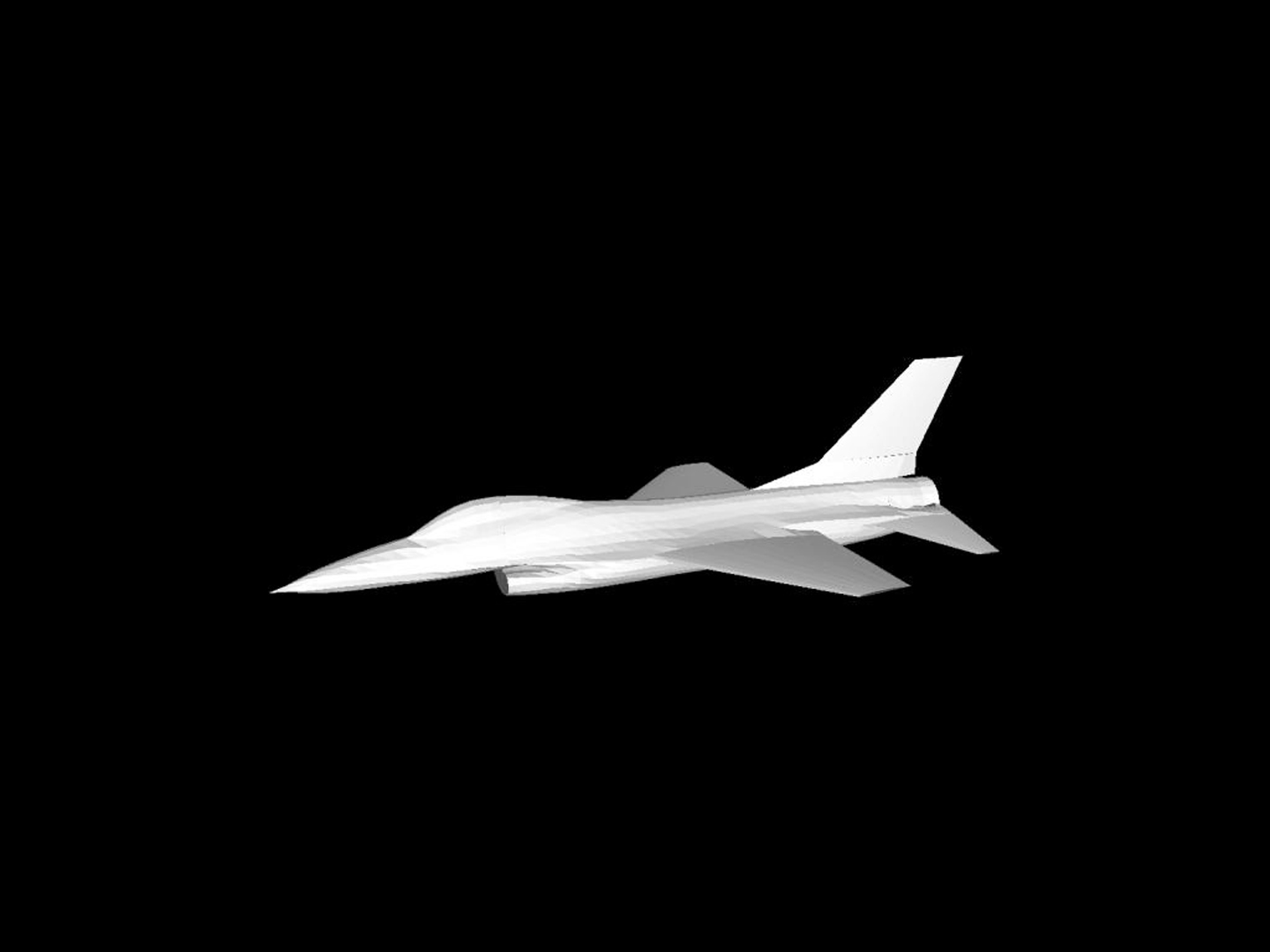“Measuring and predicting visual fidelity” by Watson, Friedman and McGaffey
Conference:
Type(s):
Title:
- Measuring and predicting visual fidelity
Presenter(s)/Author(s):
Abstract:
This paper is a study of techniques for measuring and predicting visual fidelity. As visual stimuli we use polygonal models, and vary their fidelity with two different model simplification algorithms. We also group the stimuli into two object types: animals and man made artifacts. We examine three different experimental techniques for measuring these fidelity changes: naming times, ratings, and preferences. All the measures were sensitive to the type of simplification and level of simplification. However, the measures differed from one another in their response to object type. We also examine several automatic techniques for predicting these experimental measures, including techniques based on images and on the models themselves. Automatic measures of fidelity were successful at predicting experimental ratings, less successful at predicting preferences, and largely failures at predicting naming times. We conclude with suggestions for use and improvement of the experimental and automatic measures of visual fidelity.
References:
1. Bartram, D.J. (1976). Levels of coding in picture-picture comparison tasks. Memory and Cognition, 4, 593-602.
2. Bolin, M. & Meyer, G. (1998). A perceptually based adaptive sampling algorithm. Proc. of SIGGRAPH 98. In Computer Graphics Proceedings, Annual Conference Series, 1998, ACM SIGGRAPH, 299-309.
3. Cignoni, P., Rocchini, C. & Scopigno, R. (1998). Metro: measuring error on simplified surfaces. Computer Graphics Forum, 17, 2, 167-174. Available at: http://vcg.iei.pi.cnr.it/ metro.html.
4. Cosman, P., Gray, R. & Olshen, R. (1993). Evaluating quality of compressed medical images: SNR, subjective rating and diagnostic accuracy. Proc. IEEE, 82, 6, 919-932.
5. Daly, S. (1993). The visible differences predictor: an algorithm for the assessment of image fidelity. In Watson, A. B. (ed.). Digital Images and Human Vision. MIT Press, Cambridge, MA, 179-206.
6. Edelman, S. (1999). Representation and recognition in vision. Cambridge, MA: MIT Press.
7. Garland, M. & Heckbert, P. (1997). Surface simplification using quadric error metrics. Proc. SIGGRAPH 97. In Computer Graphics Proceedings, Annual Conference Series, ACM SIGGRAPH, 209-216. Available at: http://www.cs.cmu.edu/ ~garland/quadrics/qslim.html
8. Garland, M. (1999). Multiresolution modeling: survey and future opportunities. Eurographics ’99, State of the Art Report (STAR).
9. Gersho, A. & Gray, R. (1992). Vector quantization and signal compression. Kluwer Academic Publishers, Norwell, MA. 220
10. Girod, B. (1993). What’s wrong with mean-squared error? In Watson, A. B. (ed.). Digital Images and Human Vision. MIT Press, Cambridge, MA. 207-220.
11. Hinker, P. & Hansen, C. (1993). Geometric optimization. Proc. IEEE Visualization ’93, 189-195.
12. Humphreys, G. W., Riddoch, M. J., & Quinlin, P. T. (1988). Cascade processes in picture identification. Cognitive Neuropsychology, 5, 67-103.
13. Humphreys, G. W., Lamote, C., & Lloyd-Jones, T. J. (1995). An interactive activation approach to object processing: Effects of structural similarity, name frequency, and task in normality and pathology. Memory, 3, 535-586.
14. Jolicoeur, P. (1985). The time to name disoriented natural objects. Memory & Cognition, 13, 289-303.
15. Jolicoeur, P., & Milliken, B. (1989). Identification of disoriented objects: Effects of context of prior presentation. Journal of Experimental Psychology: Learning, Memory, and Cognition, 15, 200-210.
16. Luebke, D. & Erikson, C. (1997). View dependent simplification of arbitrary polygonal environments. Proc. of SIGGRAPH 97. In Computer Graphics Proceedings, Annual Conference Series, ACM SIGGRAPH, 199-208.
17. Lindstrom, P. & Turk, G. (2000). Image-driven simplification. ACM Trans. Graphics, 19, 3, 204-241.
18. Lindstrom, P., Koller, D., Ribarsky, W., Hodges, L., Faust, N., & Turner, G. (1996). Proc. of SIGGRAPH 96. In Computer Graphics Proceedings, Annual Conference Series, ACM SIGGRAPH, 109-118.
19. Lindstrom, P. & Turk, G. (1999). Evaluation of memoryless simplification. IEEE Trans. Visualization and Computer Graphics, 5, 2, 98-115.
20. Lubin, J. (1993). A visual discrimination model for imaging system design and evaluation. In Peli, E. (ed.). Vision Models for Target Detection and Recognition, World Scientific, New Jersey, 245-283.
21. Martens, W. & Myszkowski, K. (1993). Psycho-physical validation of the visible differences predictor for global illumination applications. IEEE Visualization ’93, Late Breaking Topics, 49-52. Also available at: http://wwwsv1.u-aizu. ac.jp/labs/csel/vdp/.
22. Palmer, S., Rosch, E., & Chase, P. (1981). Canonical perspective and the perception of objects. In J. Long & A. Baddelay (Eds.), Attention & Performance IX, Hillsdale, NJ : Erlbaum, 135-151.
23. Pellachini, F., Ferward, J. & Greenberg, D. (2000). Toward a psychophysically-based light reflection model for image synthesis. Proc. of SIGGRAPH 00. In Computer Graphics Proceedings, Annual Conference Series, ACM SIGGRAPH, 55-64.
24. Ramasubramanian, M., Pattanaik, S. & Greenberg, D. (1999). A perceptually based physical error metric for realistic image synthesis. Proc. of SIGGRAPH 99. In Computer Graphics Proceedings, Annual Conference Series, ACM SIGGRAPH, 73-82.
25. Reddy, M. (1998). Specification and evaluation of level of detail selection criteria. Virtual Reality: Research, Development and Application, 3, 2, 132-143.
26. Rossignac, J. & Borrel, P. (1993). Multi resolution 3D approximations for rendering complex scenes. In Falcidieno, B. & Kunii, T. (eds.), Geometric Modeling in Computer Graphics. Springer Verlag, 455-465.
27. Rushmeier, H., Rogowitz, B. & Piatko, C. (2000). Perceptual issues in substituting texture for geometry. Human Vision and Electronic Imaging V, Bernice E. Rogowitz, Thrasyvoulos, N. Pappas, Editors, Proc. of SPIE Vol. 3959, 372-383.
28. Ryan, T., & Schwartz, C. (1956). Speed of perception as a function of mode of representation. American J. Psychology, 69, 60-69.
29. Turk, G. (1992). Re-tiling polygonal surfaces. Proc. of SIGGRAPH 92. In Computer Graphics, 26, 2 (July), ACM SIGGRAPH, 55-64.
30. Vitkovitch, M., & Tyrell, L. (1995). Sources of name disagreement in object naming. Quarterly Journal of Experimental Psychology, 48A, 822-848.
31. Volevich, V., Myszkowski, K., Khodulev, A. & Kopylov, E. (2000). Using the visual differences predictor to improve performance of progressive global illumination computation. ACM Trans. Graphics, 19, 2, 122-161.
32. Watson, B., Friedman, A. & McGaffey, A. (2000). Using naming time to evaluate quality predictors for model simplification. Proc. ACM Computer Human Interaction (CHI), 113-120.




